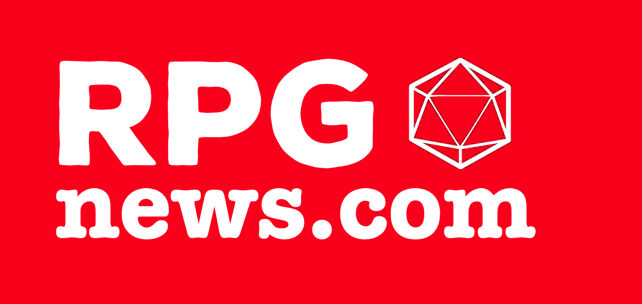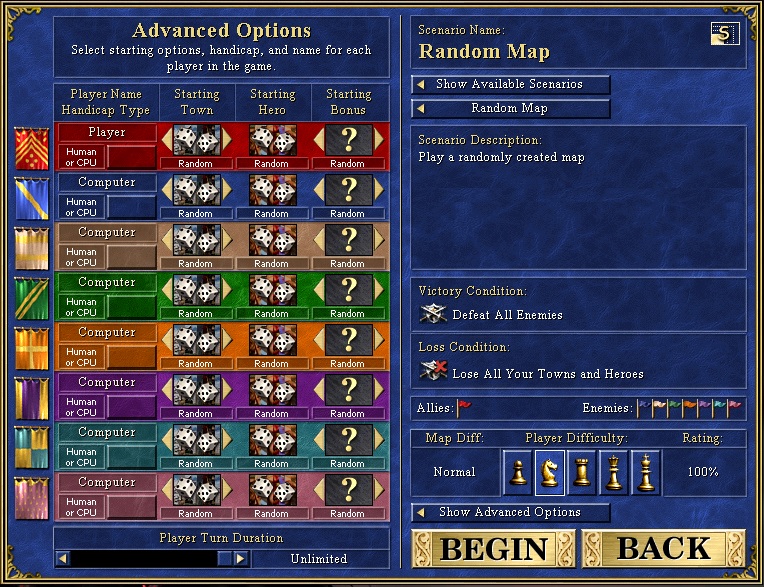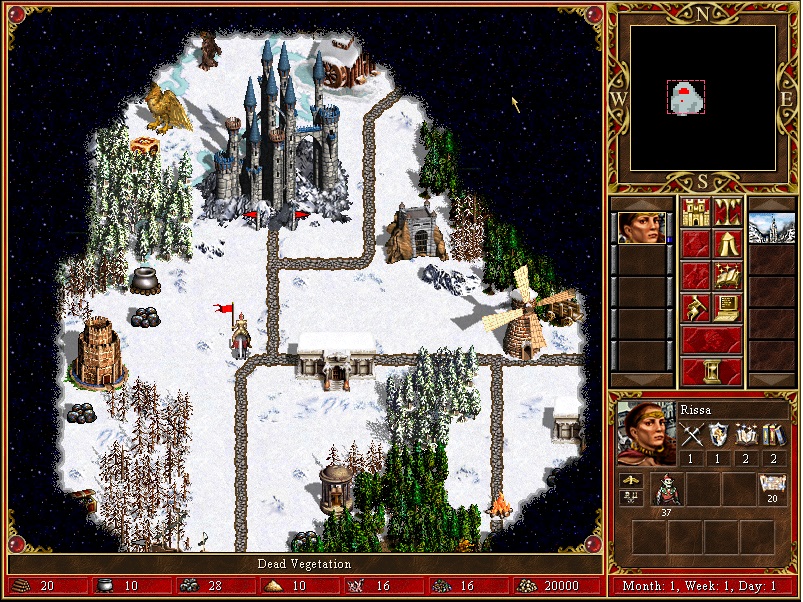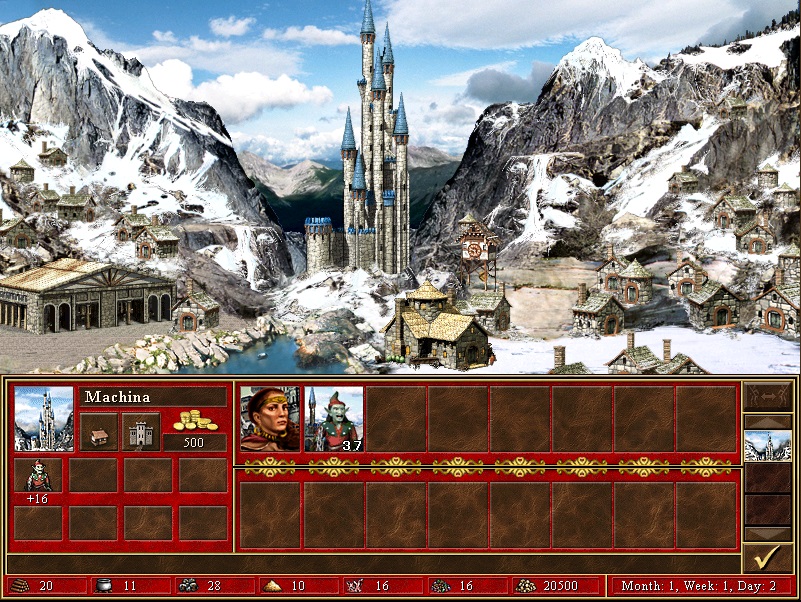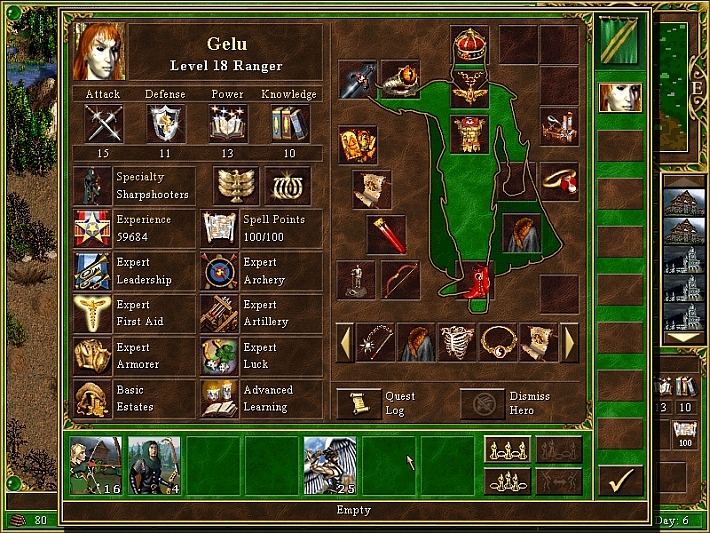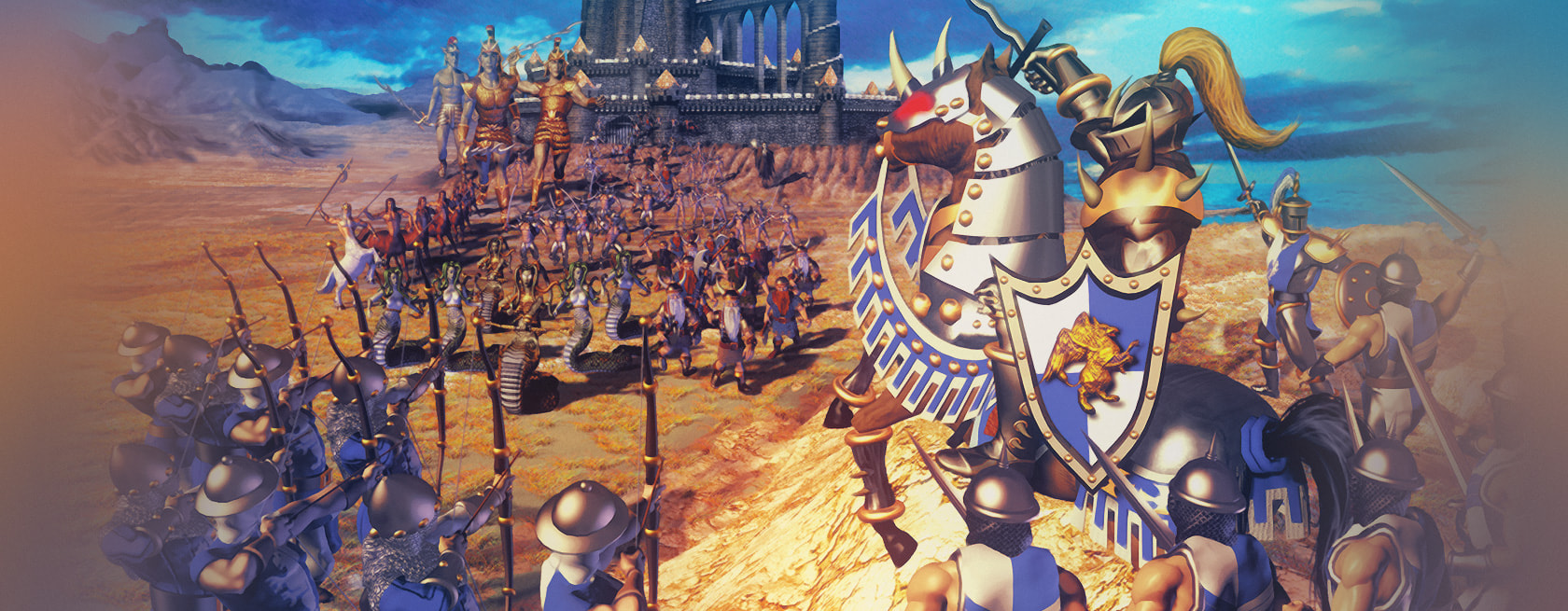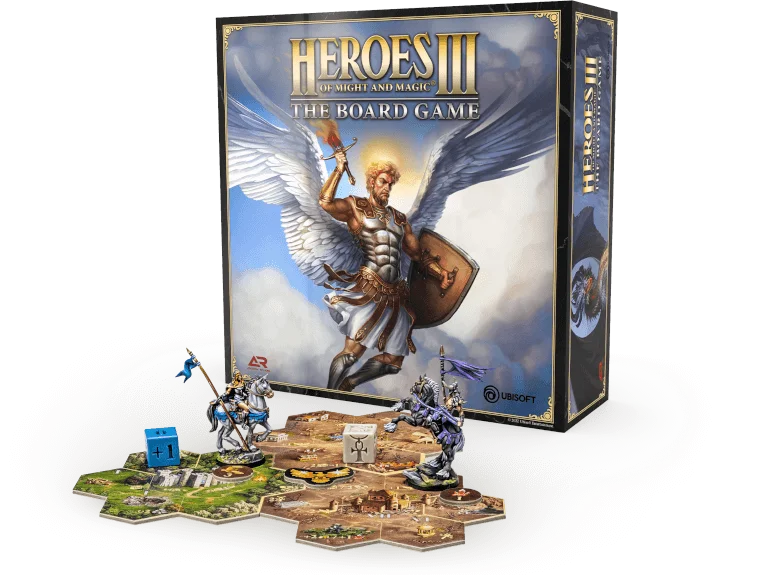Heroes of Might and Magic III is just one of seven mainline installments in the series, but its might and magic were never quite duplicated.
The Heroes of Might and Magic series began in 1995 with New World Gaming. It’s a turn-based fantasy strategy game where players control heroes and armies of fantasy monsters. The first two games in the series were excellent in their own right. But it wasn’t until the third game that the series struck gold.
By the time Heroes of Might and Magic III was set to release, New World Gaming had been acquired by 3DO, who had also published successful series like Army Men. They had taken the basics of the first two games and added a level of polish that would make it a staple for any early PC gamer.
What is Heroes of Might and Magic III?
Heroes of Might and Magic III is a lot of things. It has high-level strategy, tactical combat, city building, exploration, and RPG elements. There is a campaign mode that is probably pretty good. But I never met anyone who played it. The real game is found in what they call Scenario Mode. This is a randomly generated map with up to 8 players in any combination of human or computer and any mix of teams.
There are 9 different towns to choose from at the start. Each town has a different set of heroes, upgrades, and a group of fantasy-style monsters. This ranged from not-very-monstrous human archers to minotaurs, zombies, imps, ogres, and more.
The game is split into 3 separate sections: the map, your towns, and the battlefields. Each day, your hero has a certain movement range to claim locations to gather resources, fight roving monsters, or find treasure.
Exploring the map is only a small part of Heroes of Might and Magic III. Upon entering a town, the player enters the city-building part of the game. Admittedly, this is no SimCity, but the player has several buildings with which to upgrade their city, and therefore, the units they could recruit to their army. Each in-game week, every town populates with units for the player to hire.
There are also mage towers, taverns, blacksmiths, markets, and more. Each town type has unique buildings as well. Meanwhile, the player has to keep an eye on their various resources.
But, what good is recruiting an army if you don’t get into any fights?
Combat is pretty straightforward. Units take turns doing a single action, moving, attacking, or using a special ability. Each round the player’s hero can also cast a spell if they had the spell points to do so. These are things like Lightning Bolt, Stone Skin, Haste, and plenty more.
The gameplay loop is pretty simple. Players run around claiming the land as their own, recruiting new units, capturing enemy towns, finding hidden treasure, and battling roaming monsters until one team was left standing.
Why is Heroes of Might and Magic III So Great?
Layered on top of this relatively simple formula are tons of little bonus mechanics which make the game so fun and replayable. There are tons of heroes to play as, each with its own unique specialty. Each map is randomly generated. Plus, various artifacts hidden around the map add an exciting level of literal treasure hunting for the Holy Grail, which unlocks super overpowered upgrades for the town which claimed it.
But what really makes Heroes of Might and Magic III stand out is its core mechanic. Using multiple types of gameplay with the map, town, and battle screens each feeling separate but very interconnected. Few games at the time really used that idea. Nowadays, games like Total War, XCOM, and Crusader Kings all use similar ideas.
Subscribe to our newsletter!
Get Tabletop, RPG & Pop Culture news delivered directly to your inbox.
So, while Heroes of Might and Magic III might not as unique as it once was, it still is an excellent time capsule of a game to return to for some pleasant retro gaming nostalgia.
You can currently pick the HD Remastered Edition up on Steam or the Complete Edition on GOG (my personal recommendation) for only a few bucks. In fact, the game is so popular that there is now a board game version of it!
Matt has loved games of all kinds his whole life: board, video, war, roleplaying. He’s worked as a writer for BoLS since 2017. He’s worked as freelance editor for board game rulebooks and has designed many of his own games as well.
Read more at this site
